Read Our
Winery Blog
The Role of the Wine Glass
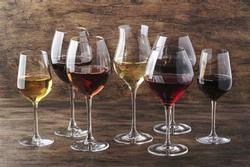
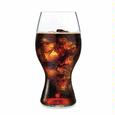
 Stylized glassware is not without its merits, designer glassware is pretty, and there is no doubt that the elegant lines and spacious globes are attractive structures unto themselves, and as such present a magnificent frame for a multitude of elixirs. They feel refined, sparkle in the light, and are downright striking seductive vessels for enhancing the experience.
Stylized glassware is not without its merits, designer glassware is pretty, and there is no doubt that the elegant lines and spacious globes are attractive structures unto themselves, and as such present a magnificent frame for a multitude of elixirs. They feel refined, sparkle in the light, and are downright striking seductive vessels for enhancing the experience.
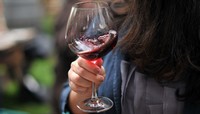 Additionally, the glassware is engineered in a multitude of shapes and designs that undeniably enhance the diffusion of the wine which makes inhaling the aromatics easier and more concentrated. Some will even argue that some of the glass designs may occasionally direct the initial impact of the contents of the glass preferentially to specific areas of taste buds. There are even classes where you will be instructed to taste the same wine from different glasses and experience the "vast tangible difference".
Additionally, the glassware is engineered in a multitude of shapes and designs that undeniably enhance the diffusion of the wine which makes inhaling the aromatics easier and more concentrated. Some will even argue that some of the glass designs may occasionally direct the initial impact of the contents of the glass preferentially to specific areas of taste buds. There are even classes where you will be instructed to taste the same wine from different glasses and experience the "vast tangible difference".
The fact of the matter is that when a normal person takes a sip of wine, it cascades all over the tongue and palate yielding a multi faceted experience that is a collaboration of all tangible tasting experiences to yield "a flavor". This is where the curated sale of designer glassware starts to weave its web.
One of the most powerful aspects of the tasting experience is the power of suggestion, and if the tasting experience is liberally sprinkled with subliminal directions of what wonders will be discovered it is almost like being handed a treasure map. If someone during a sensory experience suggests that you look for a particular sensation, they are urging you down a narrow path where you will be rewarded by being right. For example, if someone asks you to imagine a strawberry, and if you have ever had a strawberry, your memory pathways draw on the memory of experiencing a strawberry, and at that moment you will have a phantom memory experience of that strawberry. Tie this to what you have been invited to experience, and it is not too much of a stretch to say that strawberry will become a part of your present sensory experience.

Starting to get the picture? If you want to believe that the information you are being supplied with is accurate, it will have a far greater impact on your conclusion than the shape of the vessel. Here is where the glassware design argument starts to crumble.
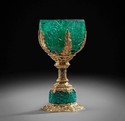
 Provided that your "vessel" is made of a non reactive substance (glass, ceramic cup, titanium etc.) it will not change the true flavor or bouquet of the wine period. The shape and size of the glass may affect how the released aromas may become focused or concentrated for easier detection, but the bouquet remains the same. For instance, take the glass off a (clean) hurricane lamp, place it over a teacup of wine and it will help you concentrate the emanating aroma, but the actual aroma remains the same. If you pour the same wine to the brim in a shot glass, the bouquet does not disappear, it remains the same, it just becomes a little harder to detect.
Provided that your "vessel" is made of a non reactive substance (glass, ceramic cup, titanium etc.) it will not change the true flavor or bouquet of the wine period. The shape and size of the glass may affect how the released aromas may become focused or concentrated for easier detection, but the bouquet remains the same. For instance, take the glass off a (clean) hurricane lamp, place it over a teacup of wine and it will help you concentrate the emanating aroma, but the actual aroma remains the same. If you pour the same wine to the brim in a shot glass, the bouquet does not disappear, it remains the same, it just becomes a little harder to detect.
Allowing a wine to "breathe" will in time change the aromas of the wine as it interacts with oxygen, sometimes for better sometimes for worse. Pouring a wine into a large globe of a glass and swirling it steadily will allow a wine to "breathe" more rapidly, and while doing so release more of the aromas into the globe so when you sniff the glass, you inhale more particles to stimulate your senses. Pour that same wine into a classic rim porcelain soup bowl, it will breathe more quickly but the aromas will dissipate at the flutter of a butterfly wing.
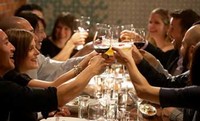 One of the most overlooked aspects of wine enjoyment is that it should not be an object lesson in sensory dissection, but a symphony of sensations that is reater than the sum of its parts. The pleasure of enjoying wine is a complex combination of factors that are unique to every imbiber and their current surroundings, it engages the sense of smell, taste, touch and vision.
One of the most overlooked aspects of wine enjoyment is that it should not be an object lesson in sensory dissection, but a symphony of sensations that is reater than the sum of its parts. The pleasure of enjoying wine is a complex combination of factors that are unique to every imbiber and their current surroundings, it engages the sense of smell, taste, touch and vision.
Bottom line, engage as many senses as you choose in the enjoyment of wine, and you will enhance the decadent pleasure of your wine experience. But remember, the pleasure of wine should be an experience, not a flavor.